Running an Etsy shop on QuickBooks Online sounds simple until you try to reconcile your payouts.
Etsy deposits lump together dozens of transactions: sales, refunds, discounts, shipping, and fees, all netted into a single payment. QuickBooks records that deposit automatically from your bank feed, but it rarely matches your actual Etsy figures.
The result?
You spend hours untangling mismatched transactions, chasing missing fees, and second-guessing your VAT or sales tax reports. For sellers operating across the UK, EU, or US, those errors can quickly snowball into overpaid taxes or inaccurate profit margins.
To help, Intuit now offers an Etsy Connector app for QuickBooks Online. It automatically imports Etsy orders, fees, and taxes into QuickBooks, but it doesn’t reconcile payouts or apply detailed VAT mapping. You still need to manually match those entries against your bank feed.
That’s where Link My Books comes in. Designed specifically for e-commerce sellers, it automates Etsy–QuickBooks bookkeeping from start to finish: pulling every sale, fee, and refund into accurate summaries that match your deposits perfectly.
In this guide, you’ll learn:
- How to integrate Etsy and QuickBooks using Link My Books (the fast, accurate way)
- How to integrate Etsy and QuickBooks using the Intuit Etsy Connector
- How to integrate Etsy and QuickBooks using a manual process.
Key Takeaways from this Post
Etsy payouts combine multiple revenue and expense types, andQuickBooks only records the net amount, leaving you to manually separate and reconcile each component.
The official Etsy Connector by Intuit helps import transaction data, but it doesn’t fully reconcile payouts or automate VAT mapping.
Link My Books solves these gaps by automatically summarizing every Etsy payout into accurate journal entries that match your bank feed, separate VAT correctly, and sync directly with QuickBooks Online.







Common Problems Etsy Sellers Face Connecting With QuickBooks
Most Etsy sellers discover early that QuickBooks doesn’t speak Etsy’s language. The two platforms record transactions differently, and that mismatch can throw your books off balance fast.
Here are the biggest problems sellers run into:
1. COGS and Profit Miscalculations: Etsy deducts fees before payouts, so QuickBooks only sees the net figure. Without a detailed fee breakdown, your cost of goods sold (COGS) and true profit margins are distorted.
2. Tax Errors by Region: Etsy collects and remits VAT or sales tax on your behalf in some regions (UK, EU, US marketplace facilitator states) but not in others. QuickBooks imports those figures as generic sales, which can cause double-reporting or missed VAT on seller-collected orders.
3. Hidden Fees and Netted Payouts: Transaction, listing, and payment-processing fees are all deducted before the payout lands in your bank account. Sellers often record only the deposit, missing deductible expenses that affect profitability.
4. Settlement Periods Spanning Multiple Months: Etsy payouts can include transactions from several days or even cross over into the next month. This complicates reconciliation and causes discrepancies in monthly sales reports and VAT returns.
5. Manual Data-Entry Errors: If you’re importing reports manually, a single typo can throw off your entire ledger. Missed decimal points, duplicate invoices, or mis-categorized fees make it nearly impossible to match deposits correctly.
6. Bank Reconciliation Gaps: Even when sales and fees import correctly, QuickBooks doesn’t automatically align them with your Etsy deposits. You still have to match each payout manually, a process that’s slow, repetitive, and prone to mistakes.
Tools like the Etsy Connector by Intuit can help with basic data syncing, but they don’t fix these deeper issues.
For clean, automated reconciliation and VAT accuracy, sellers typically move to Link My Books.
How to Integrate Etsy With QuickBooks Online the Easy Way
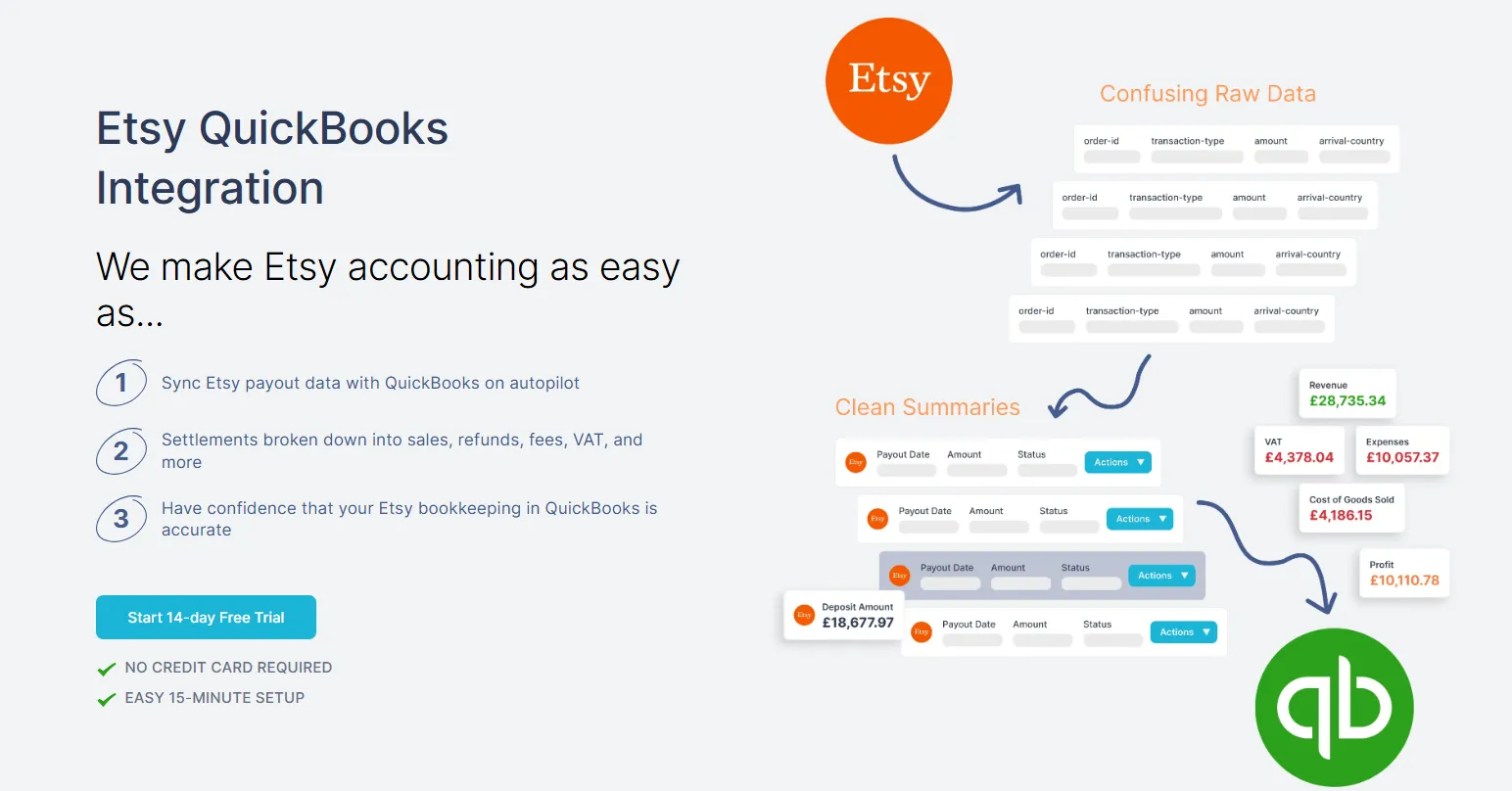
- Follow our Pre-Integration Checklist
- Connect Etsy and QuickBooks via Link My Books
- Complete the Setup Wizard
- Sync Etsy Settlements to QuickBooks
- Enable Ongoing Automation
The best way to import your Etsy transactions into QuickBooks is to automate the process using Link My Books, which handles every step from connection to reconciliation.
Here’s how to do it:
Step #1: Pre-Integration Checklist
Before you start, make sure you have:
- QuickBooks login credentials (Admin access)
- Etsy account details and marketplace permissions
- VAT registration info (UK/EU sellers) or sales-tax preferences (U.S. sellers)
- Payment gateway setup (Etsy Payments, PayPal, etc.)
- Inventory method defined (FIFO or weighted average)
- Historical data range you want to import (up to 12 months supported by Link My Books)
Taking five minutes to confirm these details prevents sync interruptions later.
Step #2: Connect Etsy and QuickBooks via Link My Books
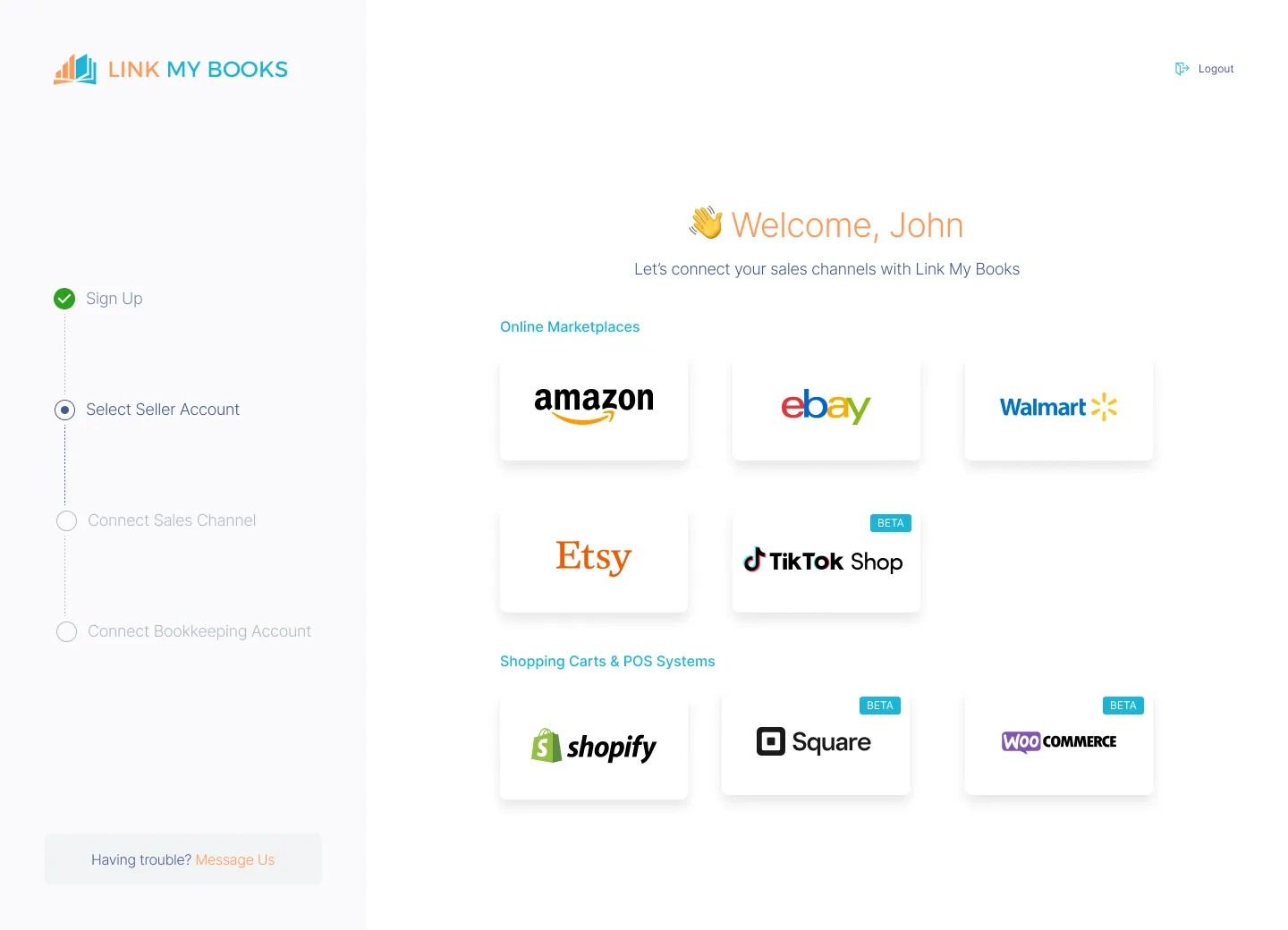
- Start a free 14-day trial of Link My Books.
- Log in with your QuickBooks Online account to authorize access.
- From the dashboard, select Etsy as your marketplace and click Connect.
- Approve secure API access so Link My Books can fetch your transaction data automatically.
This connection allows Link My Books to pull Etsy payouts, fees, and refunds directly - no manual exports needed.
Step #3: Complete the Setup Wizard
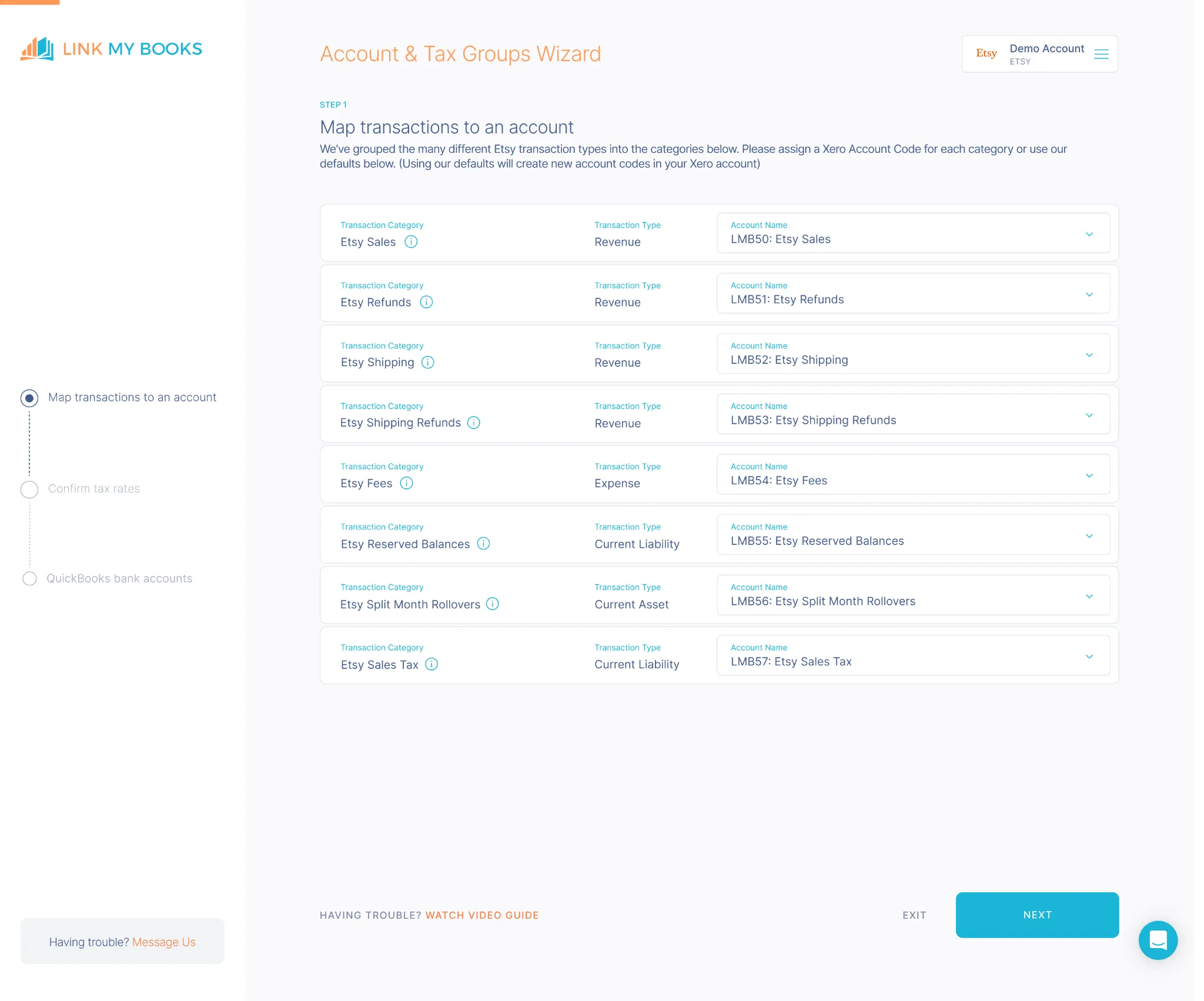
The setup wizard guides you through mapping your accounts in QuickBooks:
- Sales: Assigned to your Etsy income account.
- Refunds: Mapped to your returns or contra-revenue account.
- Etsy Fees: Posted as expenses.
- Shipping & Discounts: Categorized automatically.
- VAT/Sales Tax: Configured per region, including UK OSS or U.S. marketplace tax rules.
- COGS Tracking: Enabled for accurate profit reporting.
Each recommendation in the wizard follows e-commerce accounting best practices, so even non-accountants can set up correctly.
Step #4: Sync Etsy Settlements to QuickBooks
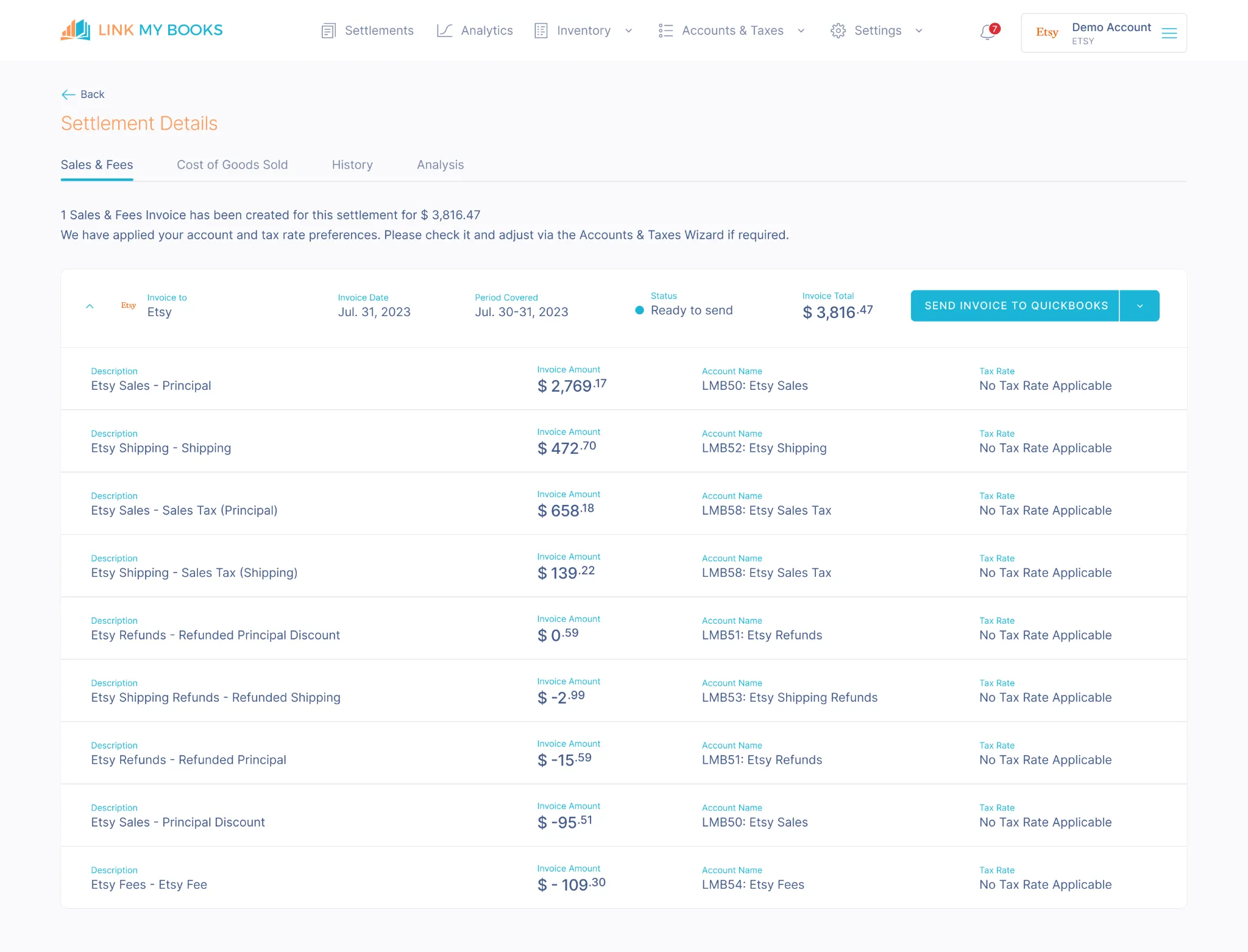
After setup, you can:
- Send settlements manually (one-by-one review), or
- Turn on AutoPost to sync payouts automatically.
Every payout is summarized into a clean journal entry or sales invoice that mirrors the exact composition of your deposit:
This structure guarantees that the journal in QuickBooks matches your bank deposit perfectly.
Step #5: Enable Ongoing Automation
Once everything is mapped correctly:
- Activate AutoPost for continuous syncing.
- Schedule daily or weekly syncs to keep data current.
- Invite your accountant or bookkeeper for shared access.
- Review reports monthly to ensure all categories align with your VAT and COGS tracking.
💡 With these steps complete, your Etsy–QuickBooks connection runs on autopilot, accurate, compliant, and fully reconciled.

👉 If you’re ready to cut your bookkeeping time from hours to minutes, reduce tax errors, and finally trust your books, you can try out Link My Books for free!
Using Link My Books as a Reconciliation Tool for Etsy ⇆ QuickBooks Integration
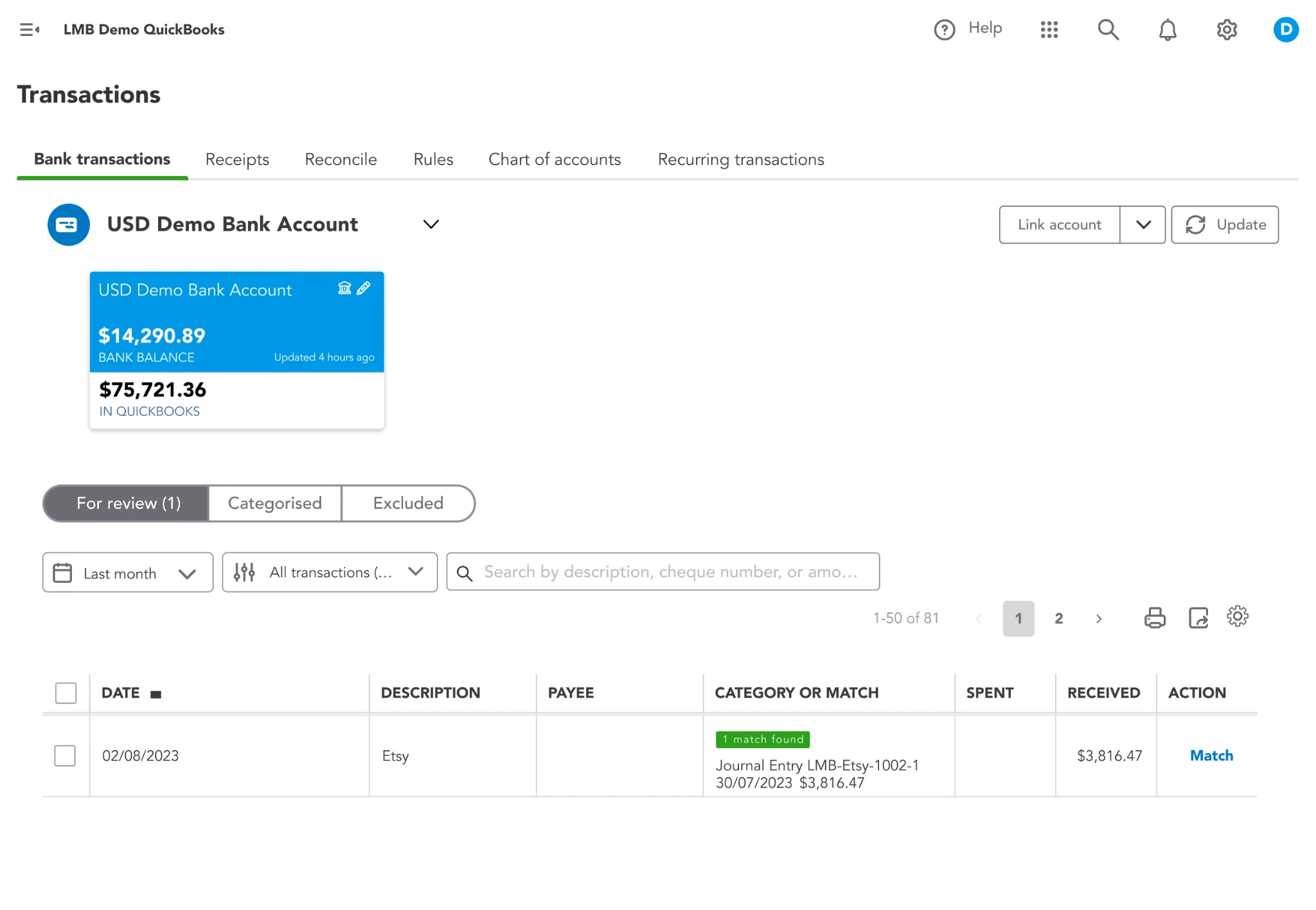
Reconciliation is where most Etsy–QuickBooks setups break down. Each Etsy payout represents dozens of underlying transactions (sales, refunds, fees, and taxes), but QuickBooks only records the final deposit. When those numbers don’t line up, sellers end up with missing fees, duplicated income, or VAT totals that don’t match reality.
Link My Books fixes this at the source.
When you connect Etsy and QuickBooks through Link My Books, each Etsy payout is automatically summarized and posted into QuickBooks as a single journal or sales invoice. Inside that summary, every line mirrors the real composition of your payout:
Once posted, each summary matches perfectly with the bank deposit shown in your QuickBooks feed, making reconciliation a one-click process instead of a weekly headache.
For multi-channel sellers, Link My Books consolidates Etsy data alongside Amazon, Shopify, eBay, and TikTok Shop payouts. That means no more juggling spreadsheets or manually cross-checking multiple marketplaces - your entire e-commerce accounting stays synchronized, accurate, and audit-ready.

How to Integrate Etsy With QuickBooks Online Using the Intuit Connector

- Install the Etsy Connector
- Connect Your Etsy Shop
- Choose Where to Record Data
- Start the Sync
- Review and Adjust Imported Data
If you want to connect Etsy directly inside QuickBooks, Intuit offers a built-in Etsy Connector.
The app automatically imports Etsy sales, fees, and taxes into QuickBooks Online and can help you avoid manual CSV uploads. However, it’s mainly a data-import tool, not a full reconciliation system.
Here’s how to set it up:
Step #1: Install the Etsy Connector

- In QuickBooks Online, go to Apps → Find Apps.
- Search for “Etsy Connector by Intuit.”
- Click Get App Now and follow the prompts to install it.
Step #2: Connect Your Etsy Shop
- When prompted, sign in to your Etsy Seller account.
- Authorize QuickBooks to access your shop’s data.
- If you manage multiple Etsy shops, choose which one to connect.
The connector can import data going back to January 1 of the previous calendar year, so choose your desired start date carefully.
Step #3: Choose Where to Record Data
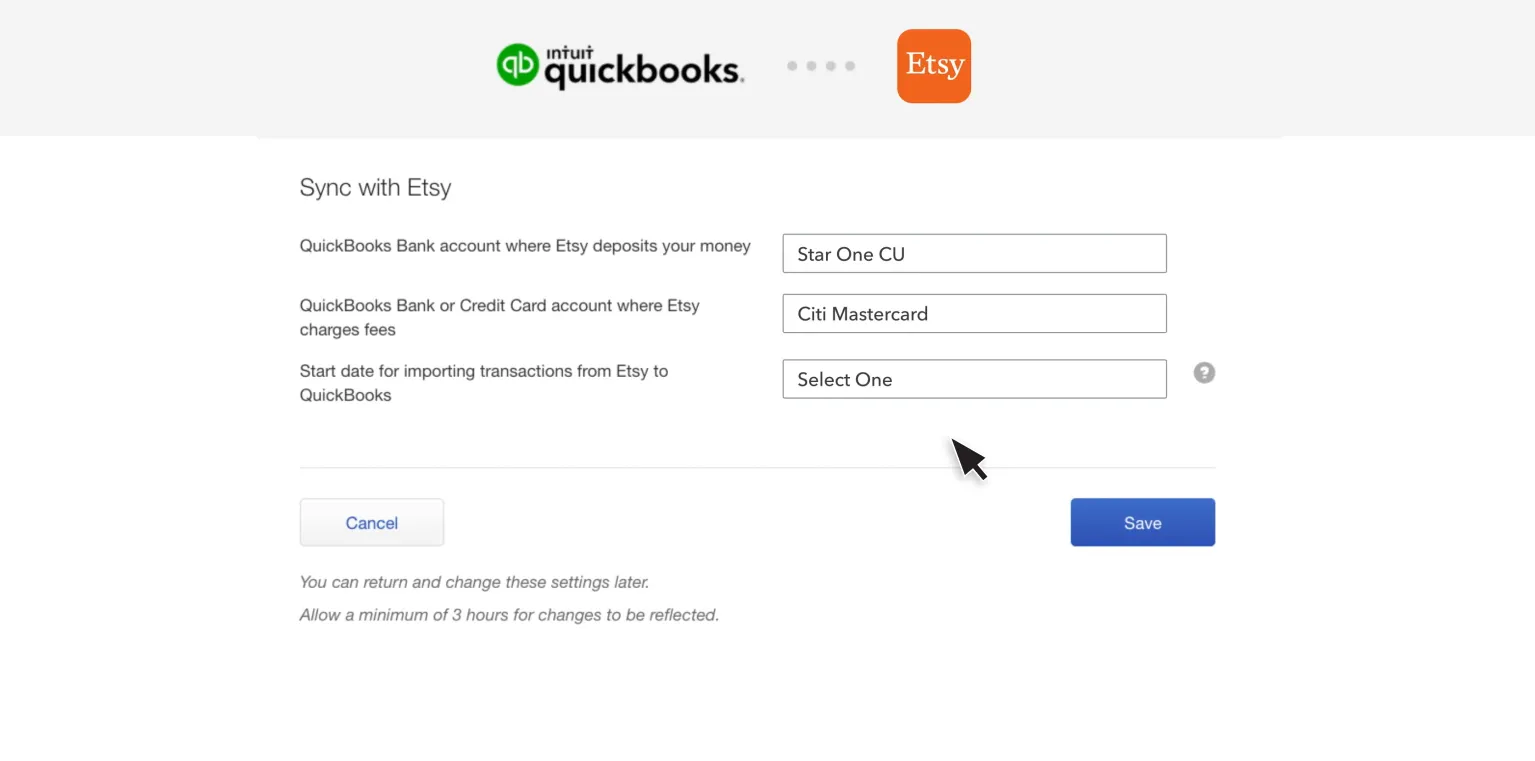
After authorizing, QuickBooks will ask you to assign where imported transactions should post:
- Sales: Map to your Etsy income account.
- Fees: Map to your Etsy fees expense account.
- Deposits: Choose the bank account where Etsy payouts are received.
- Seller Fees: Choose the credit-card or bank account from which Etsy deducts its fees.
These mappings ensure that incoming and outgoing funds are properly tracked inside QuickBooks.
Step #4: Start the Sync
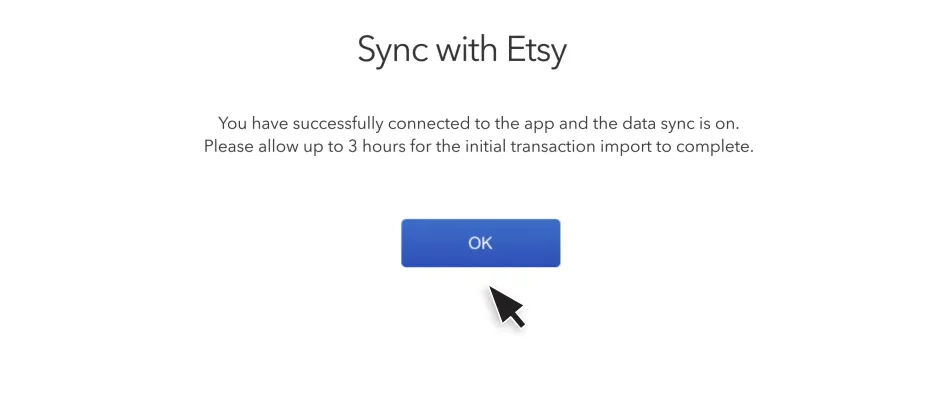
Once connected:
- The connector will automatically import new Etsy transactions every three hours.
- It creates sales receipts for orders, expenses for fees, and transfers for deposits.
- You can view imported data under Banking → App Transactions.
Important: Do not rename or edit the accounts, vendors, or customers that the app creates, as this may break the integration.
Step #5: Review and Adjust Imported Data
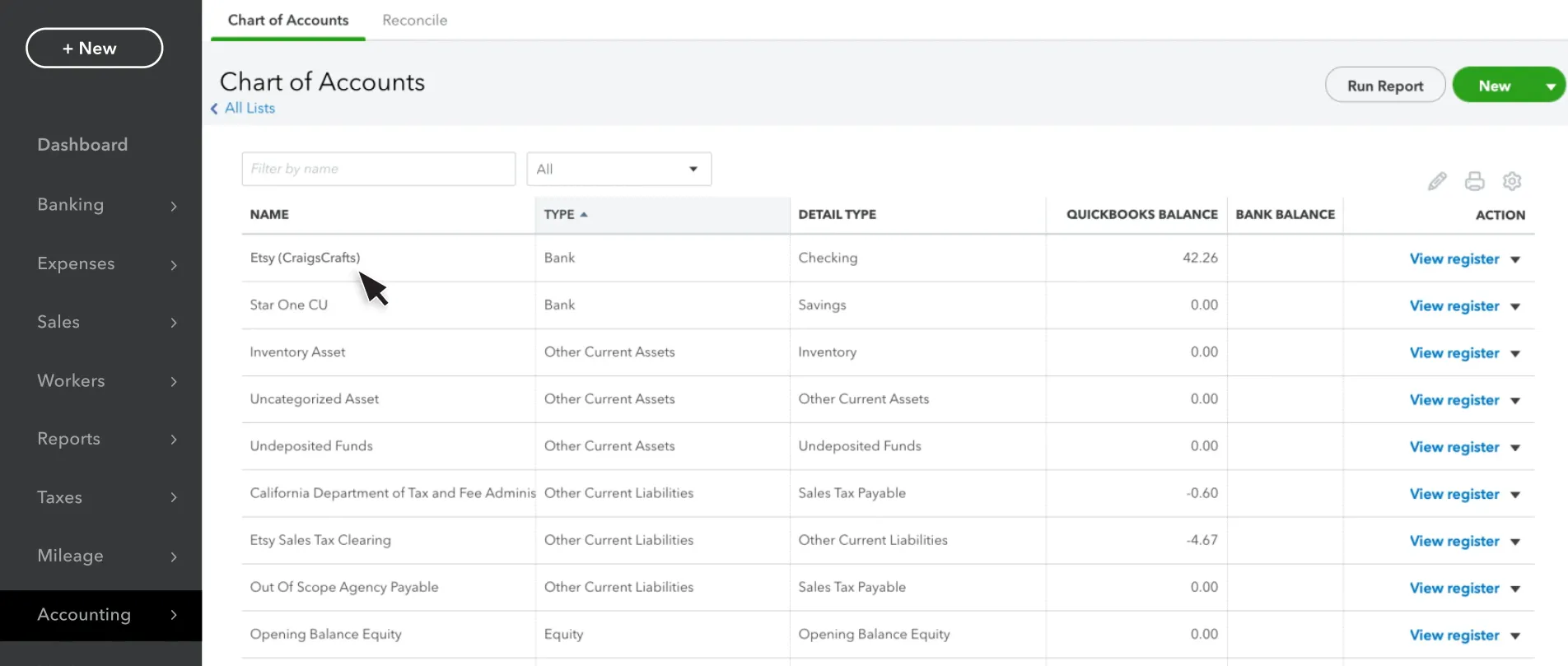
After the first sync:
- Check your Chart of Accounts and Profit and Loss report to verify data placement.
- Adjust any previously imported Etsy data to prevent duplicate entries.
- Review transactions regularly to ensure accurate categorization and tax treatment.
Limitations to Keep in Mind
- Does not summarize payouts or automatically reconcile bank deposits.
- No VAT or OSS automation for UK/EU sellers, manual mapping required.
- Limited multi-currency and multi-shop support.
- Works only with QuickBooks Online, not Desktop.
The Intuit Etsy Connector is best for small U.S.-based sellers who only need basic transaction syncing. For full reconciliation, VAT accuracy, and accountant-grade automation, Link My Books remains the preferred solution.
Comparison: Etsy Connector by Intuit vs. Link My Books
How to Manually Enter Etsy Data Into QuickBooks
- Export Etsy Payment Reports
- Categorize Each Transaction
- Create Manual Entries in QuickBooks
- Reconcile With Your Bank Feed
- Repeat Monthly
If you’re not using the Intuit Connector or Link My Books, you can still record Etsy transactions manually. However, this process is slow, error-prone, and difficult to scale once your sales increase.
Here’s what the manual workflow looks like:
Step #1: Export Etsy Payment Reports
- Log into your Etsy Shop Manager.
- Go to Finances → Payment Account → Monthly Statements.
- Download your reports in CSV format for the desired date range.
These files contain line-by-line data on sales, refunds, fees, and taxes.
Step #2: Categorize Each Transaction
Open the CSV file in Excel or Google Sheets and separate key categories:
- Sales Revenue
- Refunds / Returns
- Etsy Fees (Listing, Transaction, Processing)
- Shipping Income or Discounts
- Tax Collected / VAT
You’ll need these figures to create journal entries or invoices in QuickBooks.
Step #3: Create Manual Entries in QuickBooks
- In QuickBooks, go to + New → Journal Entry.
- Enter totals for each category:
- Credit Sales Income for gross sales.
- Debit Refunds or Returns for any issued refunds.
- Debit Etsy Fees Expense for deducted fees.
- Debit or credit Tax Payable based on your VAT/sales tax obligations.
- Add memo notes for clarity, such as “Etsy Payouts – April 2025.”
Step #4: Reconcile With Your Bank Feed
- Match the total net payout from your Etsy CSV to the deposit shown in your bank feed.
- If the numbers don’t align, check for missing fees, partial refunds, or overlapping payout dates.
Step #5: Repeat Monthly
Repeat this process for each month or payout period. It often takes several hours to reconcile, especially when managing multiple Etsy shops or payment gateways.
Why This Manual Method Is Risky
- Inconsistent VAT handling: Etsy often collects VAT on your behalf, but manual entry can easily lead to double-reporting.
- Missed deductions: Hidden transaction and processing fees reduce profit margins if not tracked correctly.
- Human error: One misplaced decimal or duplicate entry can throw off your entire ledger.
- Time drain: Even small shops lose 5–10 hours per month reconciling manually.
The Easy Alternative
With Link My Books, this entire process takes minutes instead of hours.
Etsy settlements are automatically summarized and sent to QuickBooks as perfectly matched entries - complete with accurate VAT, COGS, and fee categorization. You’ll never need to open a CSV again.
How Link My Books Makes Integrating Etsy With QuickBooks Automatic & Easy

Link My Books integration was built to automate the parts of Etsy bookkeeping that QuickBooks and the Intuit Connector can’t handle. Instead of importing hundreds of transactions and trying to reconcile them manually, Link My Books condenses every Etsy payout into a perfectly balanced summary that matches your bank feed line by line.
Here’s how it simplifies your workflow:
Automatic Categorization
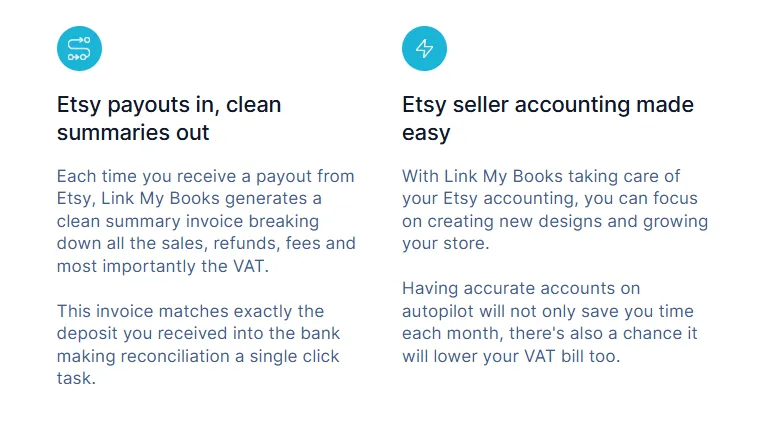
Each payout is split automatically into its key components:
- Sales revenue
- Refunds and returns
- Etsy fees (listing, payment, transaction)
- Shipping income and discounts
- VAT or sales tax
Link My Books posts these as summarized journal entries or invoices, already coded to the right QuickBooks accounts.
Accurate VAT and OSS Mapping

For UK and EU sellers, VAT compliance is handled automatically.
- The system separates marketplace-collected VAT (e.g., Etsy MOSS) from seller-collected transactions.
- VAT rates are applied based on the customer’s country.
- OSS rules are built in, preventing duplicate or missed VAT reporting.
No more manual tax mapping or risk of overpaying HMRC, Link My Books handles it at source.
Real-Time Reconciliation
Every Etsy payout synced via Link My Books matches the exact amount in your QuickBooks bank feed. No manual matching, no missing fees, and no misreported income. You can reconcile entire months of Etsy sales in minutes, not hours.
Multi-Channel Visibility
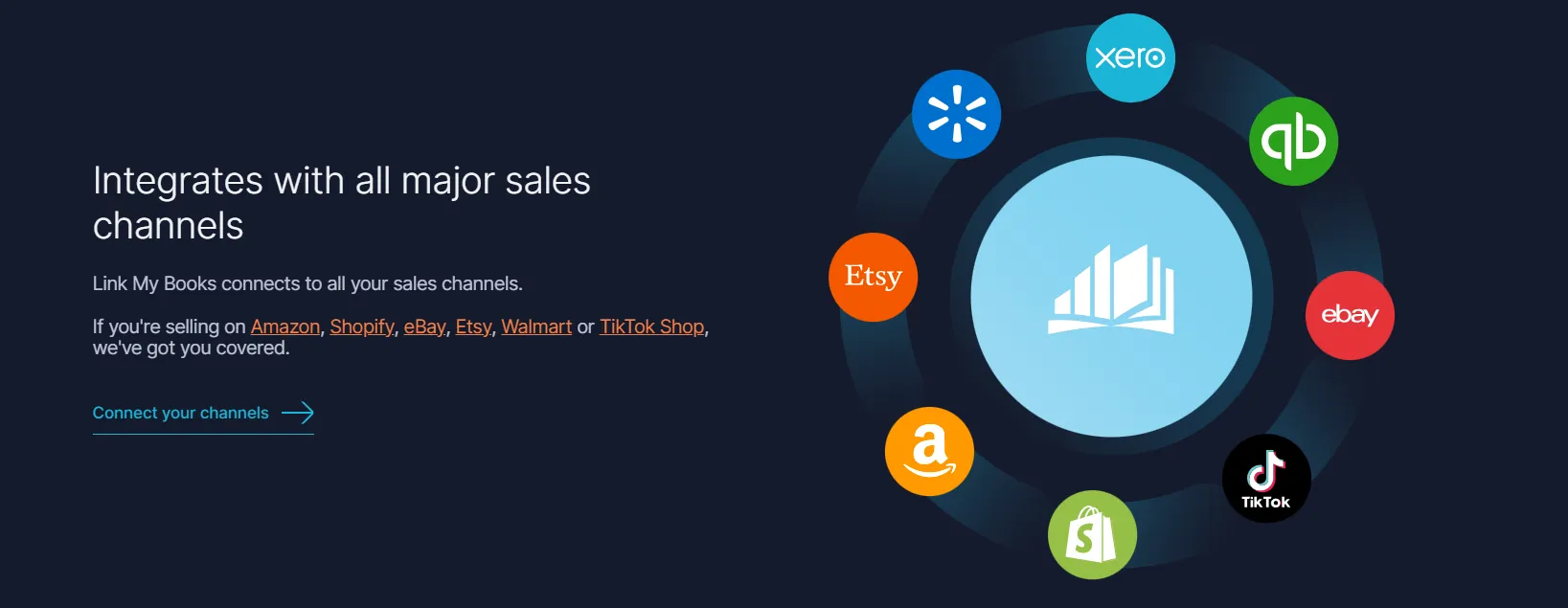
If you also sell on Shopify, Amazon, eBay, or TikTok Shop, you can connect all accounts to the same QuickBooks file. Link My Books consolidates your sales data across marketplaces, giving you a full view of your e-commerce performance in one dashboard.
Built-In Profit Analytics
Beyond reconciliation, Link My Books gives you financial clarity:
- Track profit per channel and per payout.
- Identify fee-heavy products or listings.
- Monitor cross-platform performance trends.
Ongoing Automation
Once you’ve completed setup, Link My Books runs in the background—posting new settlements automatically, tracking VAT, and keeping your books ready for filing. You can set it to AutoPost daily, weekly, or by payout frequency.
Accountant-Approved Setup
Link My Books is designed by e-commerce accountants, not general developers. You get one-to-one onboarding support from qualified UK-based professionals who understand Etsy fees, VAT rules, and reconciliation requirements.
💡 You connect Etsy once, review the first sync, and then your bookkeeping runs itself.
Etsy–QuickBooks Integration: Regional, Local & Tax Considerations
Taxes are where most Etsy–QuickBooks integrations go wrong. Different regions follow different rules, and QuickBooks doesn’t automatically recognize which transactions Etsy has already taxed on your behalf. This can lead to double-counting, underpayment, or overpayment of VAT and sales tax.
Here’s how these regional differences affect your books, and how Link My Books keeps them accurate.
United Kingdom and European Union (VAT and OSS)
Etsy acts as a marketplace facilitator in the UK and EU, meaning it collects and remits VAT on many transactions.
However, not all orders fall under this rule: sales between UK sellers and EU customers, or high-value cross-border transactions, often require your own VAT reporting.
With Link My Books:
- VAT is automatically separated into marketplace-collected and seller-collected portions.
- OSS rules are applied by country, ensuring every sale is assigned the correct VAT rate.
- Zero-rated exports (outside the UK/EU) are correctly tagged, avoiding overpayment to HMRC.
This ensures your VAT returns and QuickBooks reports always match exactly what Etsy and HMRC expect to see.
United States (Sales Tax)
In the U.S., Etsy collects and remits state-level sales tax in most jurisdictions under marketplace facilitator laws. QuickBooks often imports these amounts as standard sales, which can lead to duplicate tax entries.
Link My Books detects and separates facilitator-collected tax automatically, so your QuickBooks records reflect your actual tax liability, nothing more, nothing less.
Australia and New Zealand (GST)
For Australian and New Zealand sellers, Etsy typically collects and remits GST on behalf of the seller. QuickBooks doesn’t always recognize this distinction.
Link My Books tags these transactions correctly, posting GST collected by Etsy separately from GST you owe directly. This prevents misreporting and ensures compliance with ATO and IRD requirements.
Multi-Currency and International Sales
If you sell internationally, Etsy may pay you in multiple currencies or convert payouts before deposit. QuickBooks often struggles to align these conversions with your bank feed.
Link My Books supports full multi-currency conversion, ensuring that exchange rates are handled accurately and reflected correctly in QuickBooks.
Post-Integration Best Practices
Once your Etsy-QuickBooks integration is live, a few small habits will keep your books clean, compliant, and ready for reporting.
1. Review Your Account Mappings Quarterly
Even automated setups need periodic checks. Review your income, fee, refund, and tax accounts every few months to ensure they still align with your business structure or new Etsy features (like subscription fees or ad spend).
💡 If you switch accountants or change chart-of-accounts names, update mappings inside Link My Books to prevent posting errors.
2. Reconcile Etsy Payouts Monthly
Run a reconciliation each month before you file VAT or sales tax returns.
With Link My Books, every Etsy payout summary already matches your QuickBooks deposit, so monthly reconciliation usually takes minutes.
This ensures:
- No missing or duplicate settlements
- Fees and refunds are fully captured
- VAT figures match your returns exactly
3. Keep Historical Data Consistent
If you’ve recently switched from manual bookkeeping or the Intuit Connector, confirm that you’ve imported historical Etsy data correctly (up to 12 months in Link My Books). This gives you accurate year-to-date reporting and prevents gaps in profit analysis.
4. Track Multi-Channel Performance
If you also sell on Amazon, eBay, Shopify, or TikTok Shop, use Link My Books’ consolidated dashboard to compare profitability across platforms. This helps identify which channels drive the highest net margins after fees and taxes.
5. Prepare for Tax Season Early
Because Link My Books applies VAT, OSS, or sales-tax codes automatically, your filings will already match your QuickBooks data. Still, download your settlement summaries at quarter-end and review them with your accountant to catch any anomalies early.
6. Invite Your Accountant or Bookkeeper
Grant your accountant direct access to your Link My Books account. This saves them from sorting raw Etsy exports and ensures they can file VAT returns directly from accurate, reconciled data.
7. Schedule Regular Syncs
Set AutoPost frequency to daily or per payout, depending on volume. Automatic syncing prevents backlog and keeps your QuickBooks dashboards up to date in real time.
FAQ on Etsy and QuickBooks Integrations

Can Etsy integrate directly with QuickBooks?
Yes. Etsy integrates with QuickBooks Online through the official Etsy Connector by Intuit. It automatically imports orders, fees, and taxes. However, it doesn’t handle full payout reconciliation or VAT mapping. For complete automation and accurate reporting, use Link My Books, which connects Etsy and QuickBooks in minutes.
How do I reconcile Etsy payouts in QuickBooks?
QuickBooks alone can’t reconcile Etsy’s net deposits because they include multiple transactions. The easiest solution is to use Link My Books to reconcile Etsy payments in QuickBooks.
Each payout is summarized and posted as a single entry that matches your bank feed, ensuring a perfect reconciliation every time.
What is the best QuickBooks Etsy connector?
For small sellers in the U.S., Intuit’s Etsy Connector is sufficient for basic imports. For UK and EU sellers, or anyone who needs automated VAT, OSS, and fee breakdowns, Link My Books is the best choice. It provides full payout summaries, multi-currency support, and one-click reconciliation.
How does Link My Books handle VAT and tax compliance?
Link My Books automatically applies VAT and OSS rules based on the customer’s location, separating marketplace-collected tax (e.g., Etsy MOSS) from seller-collected VAT. You can read more in our Etsy VAT guide.
Can I use QuickBooks without an integration tool?
Yes, but it’s time-consuming. You’ll need to manually download CSVs and enter transactions into QuickBooks. Our guide on Etsy bookkeeping explains what to track if you’re handling entries manually.
How often does data sync between Etsy and QuickBooks?
The Intuit Connector syncs approximately every 3 hours. Link My Books lets you choose between manual syncs or automated posting (AutoPost), keeping your books up to date daily or per payout.
Can I view sales and performance data from Etsy inside QuickBooks?
You can see imported transactions in QuickBooks, but for full financial visibility (including profit, fees, and multi-channel comparisons), Link My Books provides deeper analytics. Read our full Etsy sales report guide for details.
Does Link My Books support multiple Etsy shops or sales channels?
Yes. You can connect multiple Etsy shops to one QuickBooks file, and even add other marketplaces like Amazon, Shopify, eBay, TikTok Shop, and Walmart.
Can I import historical data from Etsy?
Yes. The Intuit Connector imports data back to January 1 of the previous year, while Link My Books supports up to 24 months of historical data, depending on your plan.
What’s the best way to manage ongoing Etsy accounting?
Automate it. Once set up, Link My Books runs in the background, posting every Etsy payout automatically to QuickBooks. For additional accuracy, follow our best Etsy accounting software recommendations to optimize your full bookkeeping workflow.
Etsy Business Integration With QuickBooks – Automate With Link My Books
Manual Etsy bookkeeping drains hours and introduces costly errors. Even the official Etsy Connector by Intuit stops short of full reconciliation or VAT accuracy, leaving sellers to chase mismatched payouts and incomplete tax data.
Link My Books automates it all.
Every Etsy payout is summarized, categorized, and synced straight into QuickBooks with perfect accuracy. Fees, refunds, VAT, OSS, and COGS are all handled automatically, so your books always match your bank feed and your tax filings stay compliant.
Join thousands of sellers who save hours every month with automated Etsy bookkeeping that just works.

👉 Start your free 14-day trial of Link My Books, or book a demo, and we will deliver a personalised experience for you!



![How to Integrate Etsy with QuickBooks Online in 10 Minutes [2025]](https://cdn.prod.website-files.com/60af32ce0a63dc4f22cc85a1/690248aa46283429bc3ea326_etsy%20quickbooks%20integration.webp)







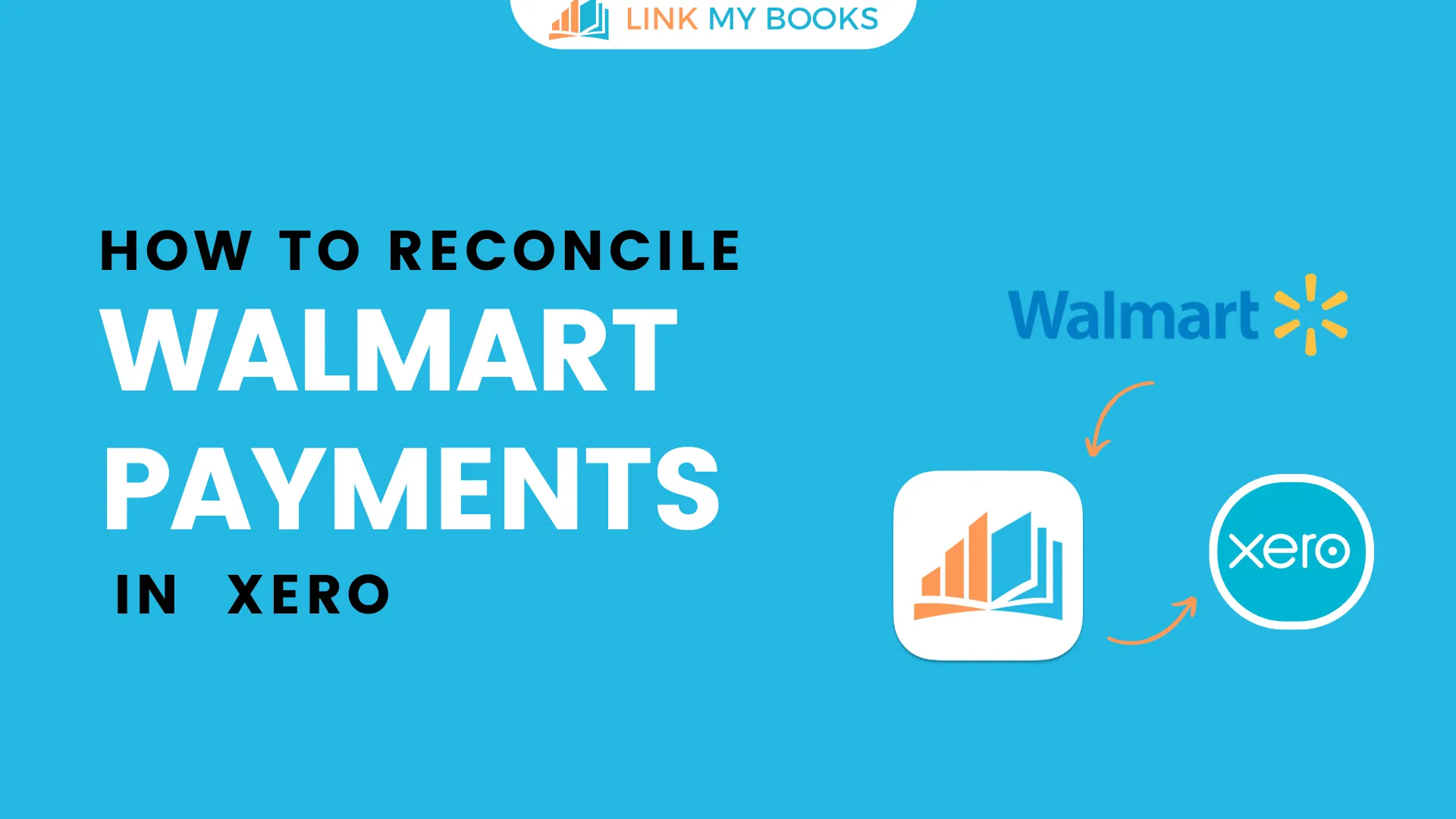
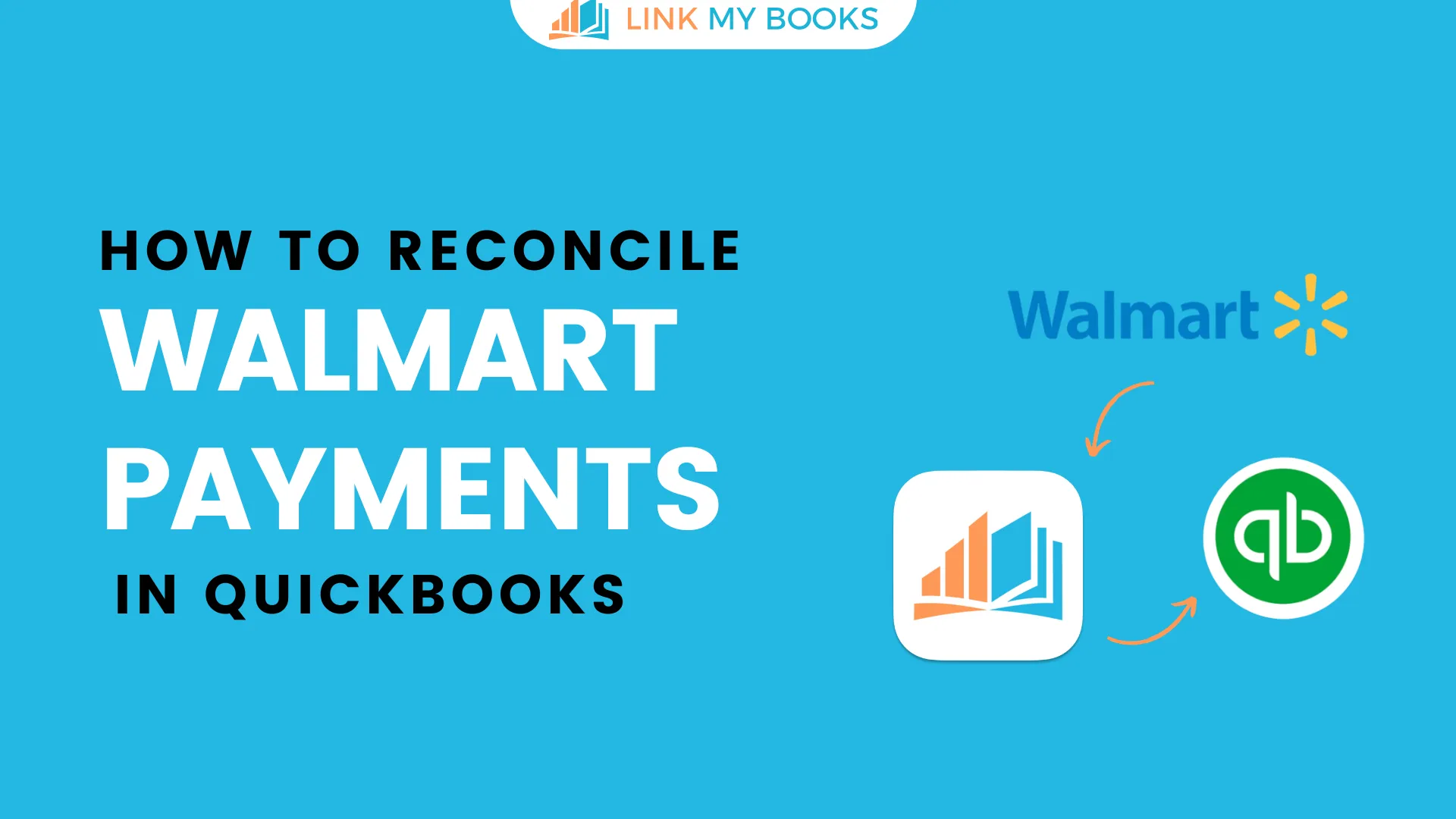
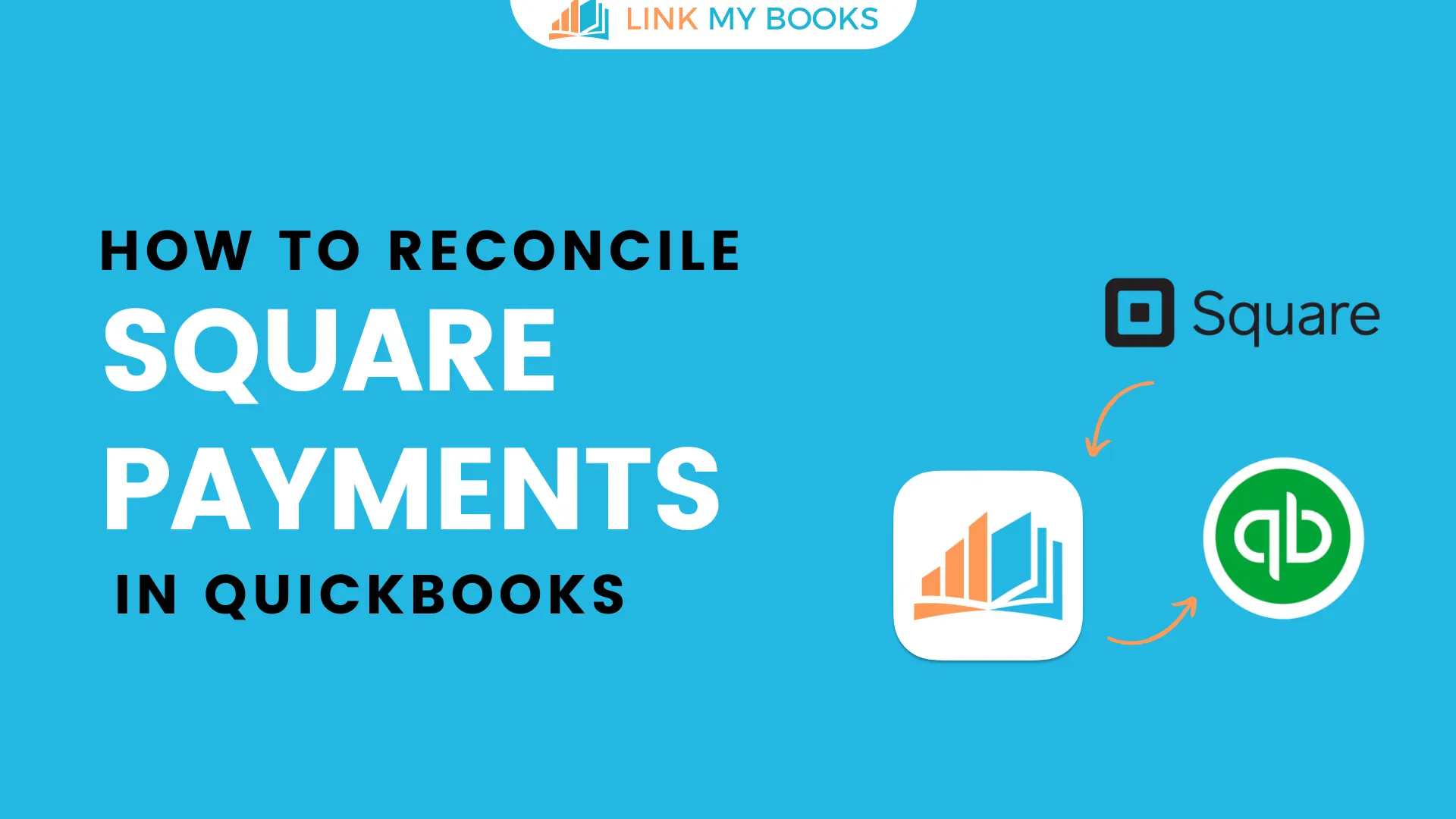
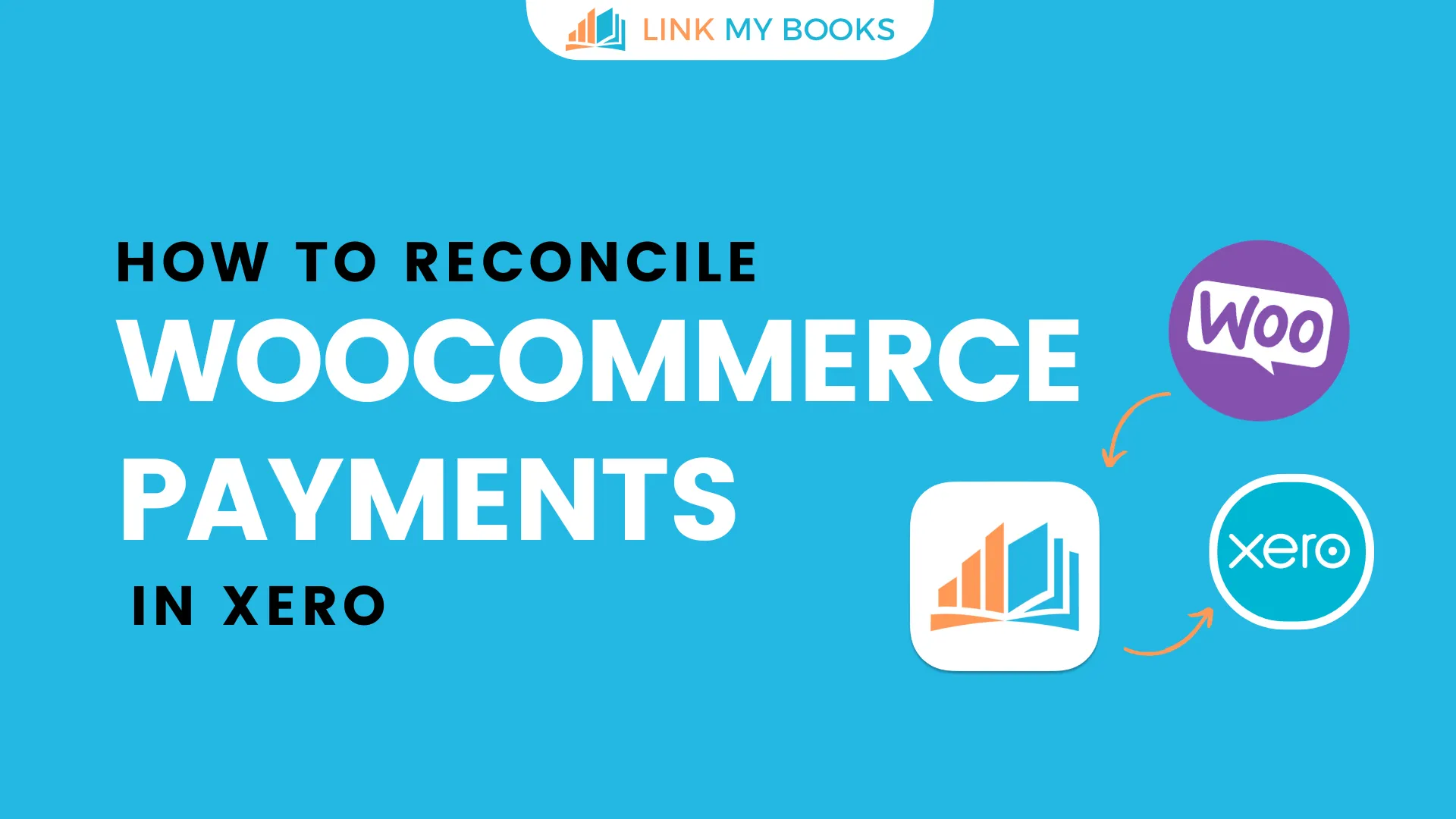

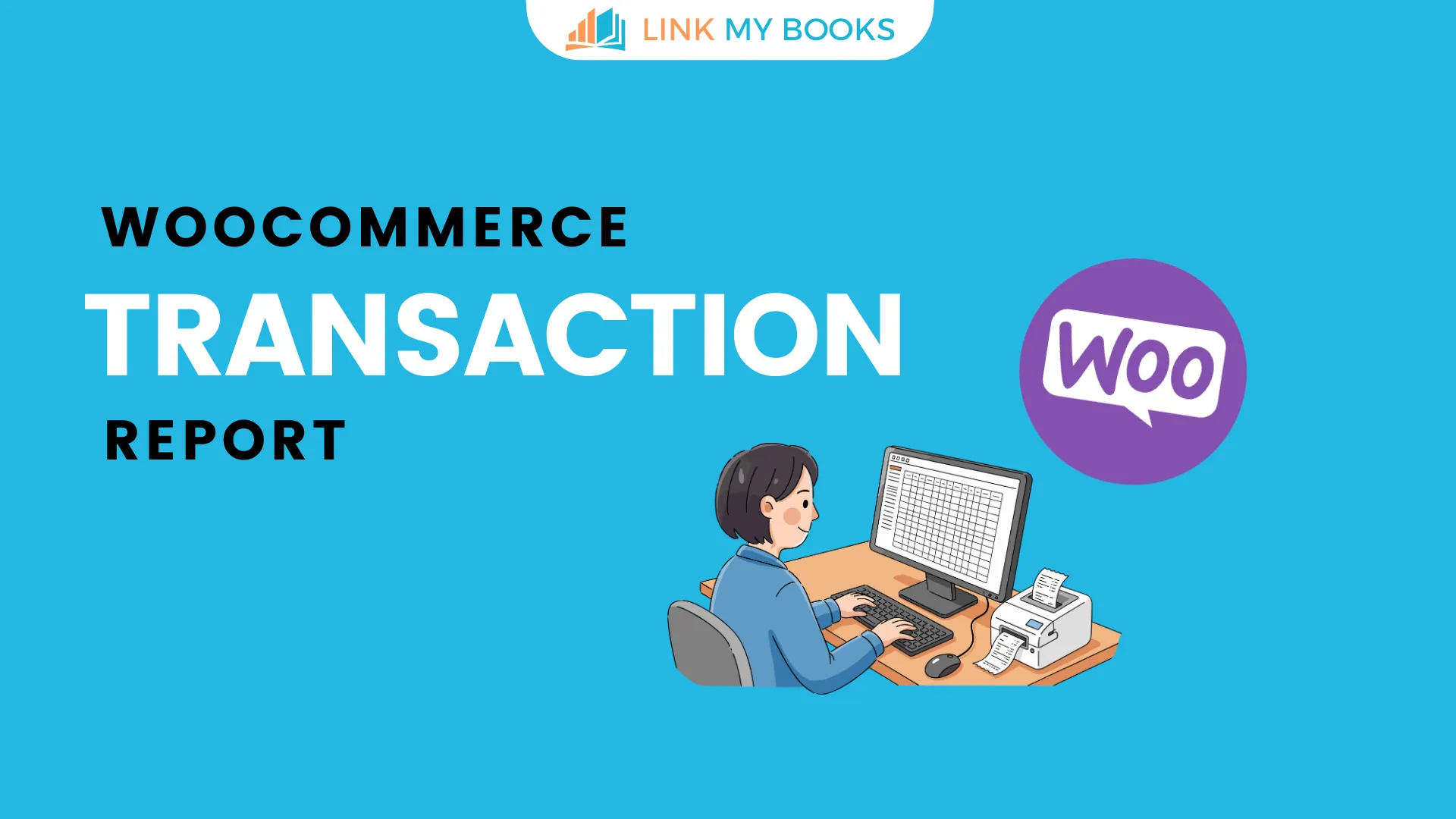


.png)